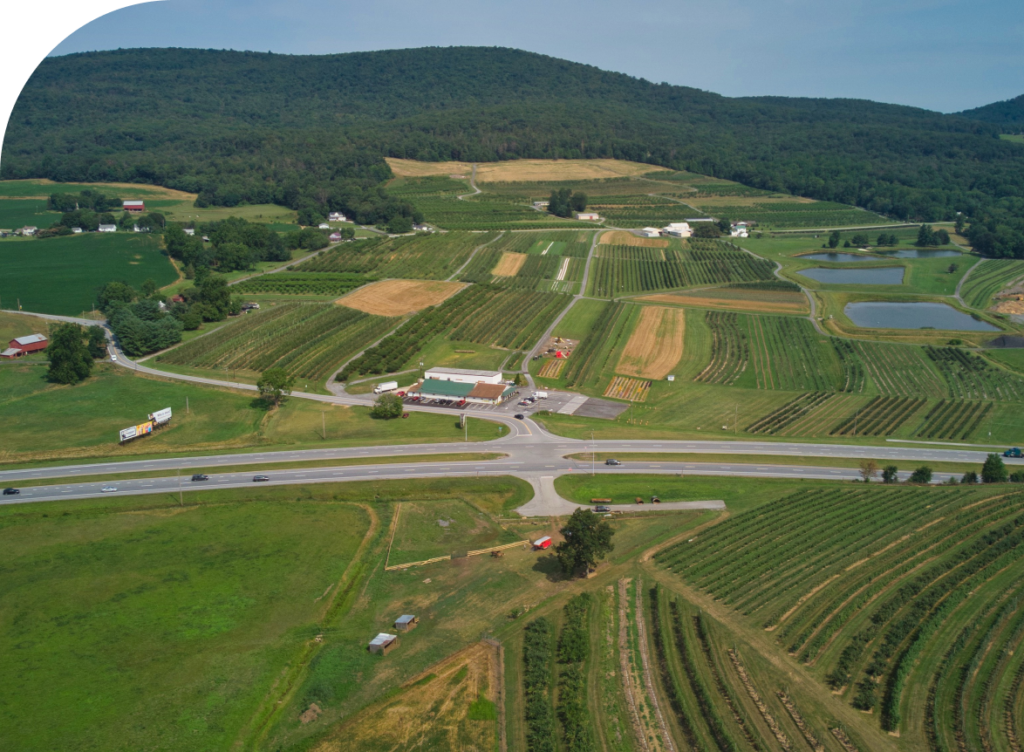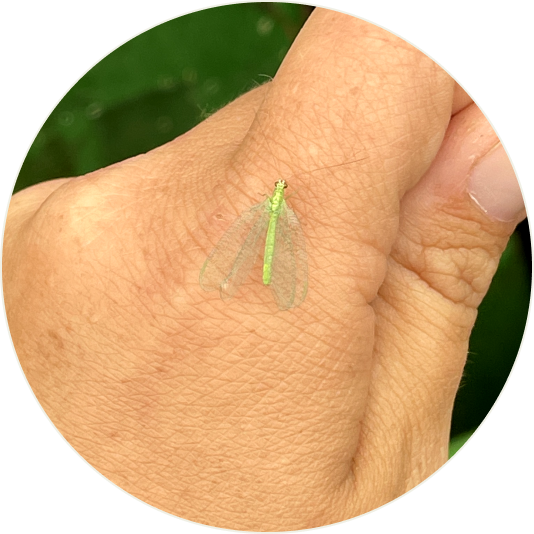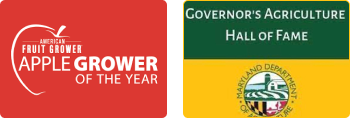Stewards of the Land
Proud to be an IPM Grower!

Catoctin Mountain Orchard makes the hills of Thurmont Maryland even more beautiful with miles of fruit trees that they grow and maintain, the rows of flowers in fields surrounding their buildings and the rest of the land that make up their orchards. When you visit, you can expect to see a plethora of fruits, vegetables, crafts, jarred goods, pies, breads and other homemade and natural goods.
Michael M.
What is IPM?
An approach to managing pests (which can be insects, disease, or weeds!) using a combination of biological, chemical, and cultural methods supported by weather prediction data, pest development models, and scouting information taken directly from the orchard.
How do we implement IPM on our farm?
Below are common examples of each of the three categories of IPM.

Biological
By installing mating disruption ties on trees we are able to “confuse” the males and never let them find a mate. This helps limit the number of future generations of insects and greatly reduces the use of pesticides. We also use “good bugs” (e.g. Lady Bugs & Green Lacewings) to work against “bad bugs” (e.g. Aphids, Stink Bugs & Mites). We let Lady Bugs thrive to do what they do best: eat Aphids!
Cultural
Proper pruning, training techniques, and keeping our orchard mowed and weed-free, we limit the pests breeding areas and reduce their chances of survival. By increasing the amount of organic matter in the soil, this helps to create an environment for good insects and organisms to help maintain a good healthy orchard.
Chemical
With constant research and more advanced chemistries available to us, we can use “softer,” less toxic products that specifically target the pest organisms instead of killing all the good insects in an orchard.
What About Organic? What’s The Difference?
Just like IPM practices, organic production methods are evolving. Many of the IPM practices used on our farm are accepted as organic. Unlike organic practices, growers who responsibly use IPM make optimum use of the many management practices mentioned previously. Many IPM sprays do not qualify for use by organic standards. However, organic producers frequently use high rates of other sprays to try to control the same pests IPM growers control with their integrated approach.
“Organic production” is very popular in today’s marketplace, but it is not necessarily a safer, healthier, or more environmentally friendly method of fruit production. Regardless, the U.S. produce you eat is grown in a safer, more environmentally friendly manner than anywhere else in the world – and supporting your local grower will keep it that way!

